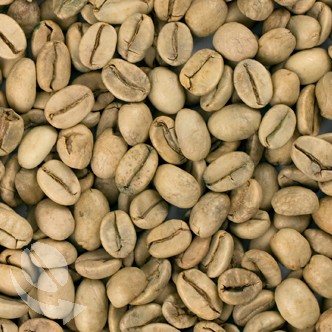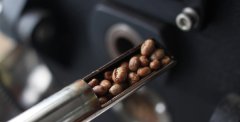How to select high quality raw coffee beans

Professional barista communication, please pay attention to coffee workshop (Weixin Official Accounts cafe_style)
To brew a good cup of coffee, we must start from the selection of coffee beans of consistent quality. In order not to let a small amount of impurities (whether fine metals or defective beans) affect the aroma of coffee, it is necessary to go through complicated screening procedures to select coffee beans of consistent quality and high quality.
Coffee trees are planted in a good environment free of pests and diseases, discarding green, dry, abnormal seeds and planting only healthy mature coffee beans.
Density screening: the fresh fruit picked by water buoyancy will float immature rotten fruit, let stones, metals and other heavier impurities sink to the bottom, use the "peeling machine" can be removed from the fruit skin without damaging the seeds
In order to make the seed free of odors and defects, the fruit is fermented properly to remove the pulp attached to the seed.
The final step in drying the green beans is to dry them in a heated dryer to avoid over-fermentation, overheating, and mildew, and to keep them in an optimum dry condition
To remove the skins and shells of green beans after the drying process, distinguish clean green beans by size, shape, and density, and pick out cracked, deformed, and abnormal green beans.
Color classification: pick out the abnormal color of clean raw beans (normal color is green), remove foreign impurities such as bad smelly beans, stones, wires, dust, dust, etc.
Further density screening with air circulation and vibrating conveyor belts
Odor classification: coffee beans must be free of mildew or any foreign smell
Distinguish green beans by baking color consistency: remove overcooked or undercooked beans
Classify crops by age, origin, and time of delivery.
Most growing countries already maintain the quality of green beans according to the above classification system, some countries consider combining the above classification system to classify green beans, different kinds of coffee beans are mixed at the same time, just like mixing food, if the high-grade coffee beans and poor coffee beans will be mixed, the coffee quality will be reduced.
Important Notice :
前街咖啡 FrontStreet Coffee has moved to new addredd:
FrontStreet Coffee Address: 315,Donghua East Road,GuangZhou
Tel:020 38364473
- Prev

Baking Guide | relationship between baking degree and sweetness
For professional baristas, please pay attention to the coffee workshop (official Wechat account cafe_style). The deeper the baking degree and sweetness, the stronger the sweetness, which represents the higher the sweetness intensity. this is a misconception * raw bean stage: sweetness has not yet begun to develop * heating and dehydration stage: the first half is not warm enough to develop sweetness, and the temperature in the second half just reaches the starting point of pyrolysis 160 degrees Celsius.
- Next

Coffee roasting | changes in the properties of coffee beans during roasting
Communication of professional baristas Please pay attention to the stir-frying process in the coffee workshop (Wechat official account cafe_style). It is the main process of heating raw beans and developing the aroma and taste of coffee. The aroma and taste emitted are determined by the original characteristics of each kind of raw bean. The depth of fried beans depends on the type of raw beans, market demand or cooking methods. What kind of baking machine controls the depth of fried beans
Related
- Beginners will see the "Coffee pull flower" guide!
- What is the difference between ice blog purified milk and ordinary milk coffee?
- Why is the Philippines the largest producer of crops in Liberia?
- For coffee extraction, should the fine powder be retained?
- How does extracted espresso fill pressed powder? How much strength does it take to press the powder?
- How to make jasmine cold extract coffee? Is the jasmine + latte good?
- Will this little toy really make the coffee taste better? How does Lily Drip affect coffee extraction?
- Will the action of slapping the filter cup also affect coffee extraction?
- What's the difference between powder-to-water ratio and powder-to-liquid ratio?
- What is the Ethiopian local species? What does it have to do with Heirloom native species?

